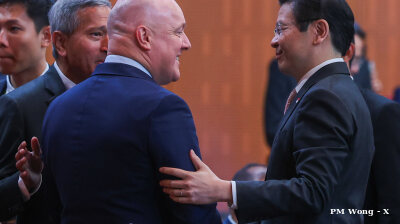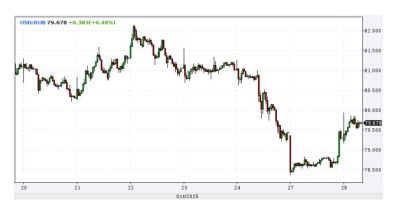President Volodymyr Zelenskiy ordered Ukraine’s Ministry of Defence to begin the controlled export of domestically produced weapons starting in November for the first time in the hope of boosting production and attracting investment to the defence sector, the The Kyiv Independent reports.
“The controlled export programme for our weapons should be launched next month,” Zelenskiy said in a statement on social media on October 28. “Ukrainian Minister of Defence Denys Shmyhal must, by the end of the year, ensure full completion of tasks for the production and delivery of drones — FPV drones, interceptor drones, and drones for deep-strike missions.”
The order follows a previous announcement made by Zelenskiy on June 21, in which he outlined Kyiv’s intent to begin exporting defence technologies and open weapons production lines in allied countries.
The shift comes amid rapid growth in Ukraine’s domestic drone sector, which has outpaced available funding. Earlier officials said that Ukraine’s drone producers could significantly increase output, but the main constrain was the lack of funding. Opening the sector up to limited exports could attract foreign capital and significantly increase output.
Since Russia’s full-scale invasion in 2022, Ukraine’s defence industry — particularly its drone manufacturing segment — has expanded rapidly, with more than 200 companies emerging to produce low-cost, adaptable unmanned systems. These drones have played a critical role in reshaping battlefield dynamics and are now seen as a potential source of revenue for the war-strained economy.
Exporting domestically produced weapons has until now been tightly restricted under Ukrainian law to ensure sufficient supplies on the battlefield. Exports require approval from the State Export Service. However, in May, a coalition of defence manufacturers called on the government to relax these restrictions, specifically targeting military-grade drone exports.
Under the new programme, Ukraine will export surplus military equipment to markets outside the US, with revenues earmarked for the procurement of priority systems such as interceptor drones.
As part of his efforts to keep US President Donald Trump in the game, Zelenskiy offered a mega drones-for-weapons deal worth $100bn where Ukraine would swap its leading drone technology for advanced US missiles. The deal includes the supply of the powerful Tomahawk missiles – an issue on which Trump continues to vacillate.
Zelenskiy has said Kyiv plans to pursue export agreements with countries across Europe, the Middle East, and Africa. “Proposals had already been received by several African nations,” he said, adding that Ukraine had selected its first partner country, though he did not name it.
Zelenskiy also noted Ukraine’s intention to expand purchases of US arms under Nato’s PURL (Prioritized Ukraine Requirements List) initiative. Discussions on a potential mega-deal” and a separate “Drone Deal” for the sale of Ukrainian unmanned systems to Washington have not yet resulted in a formal agreement.
Although US President Donald Trump did not commit to providing Tomahawk missiles during his most recent Oval Office meeting with Zelenskiy, he “did signal his openness to a weapons deal with Kyiv that could involve US-made missiles and Ukrainian drones.”
In the meantime, one in eight (78%) of defence companies have already moved production outside of Ukraine, or plan to do so.
The Technological Forces of Ukraine reports that out of 35 private defence firms surveyed, 78% have relocated or intend to relocate their production, technology rights, and R&D offices abroad.
Common destinations include Poland, the Czech Republic, the US, Slovakia, and Estonia. The primary reason for these relocations, cited by 89% of Ukrainian defence manufacturers, is security risks. Despite these moves, many companies would keep capacities in Ukraine if exports were allowed, government procurement remained predictable and stable, and joint ventures with international partners were feasible.
European defence companies are increasingly setting up production inside of Ukraine or cooperating with Ukrainian manufacturers under the so-called Danish model.
In the latest example, the Swedish Gripen fighter jet manufacturer considers establishing a plant in Ukraine. Swedish defence firm Saab is exploring the possibility of opening a factory in Ukraine to produce Gripen fighters.
If an agreement between Saab and Ukraine to provide 100 to 150 of the latest Saab JAS 39 Gripen E fighters is finalized, it could double Saab's production capacity requirements, the company said.
Bankova’s long-term plan has been to make Ukraine a defence sector manufacturing hub.
News

Russia withdraws from Cold War plutonium disposal pact with US
Russian President Vladimir Putin has formally withdrawn from a key arms control agreement with the United States governing the disposal of weapons-grade plutonium, as the few remaining nuclear security accords between the two powers vanish.
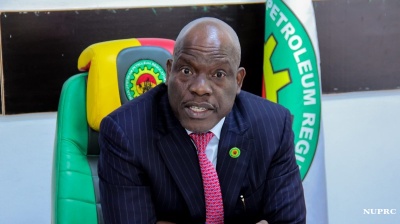
Nigeria’s NUPRC holds exploratory talks with Bank of America on upstream financing
Nigeria's upstream regulator, NUPRC, has held exploratory talks with Bank of America as the country looks to attract new capital and revive crude output, after falling short of its OPEC+ quota.
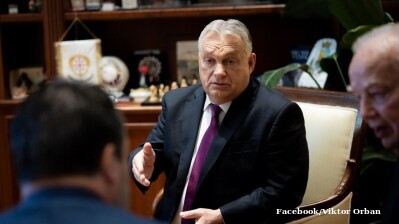
European diplomacy should have stopped war, Orban tells Italian broadcaster
The job of European diplomacy would have been stopping the war in Ukraine, but Brussels has become "irrelevant" by deciding not to negotiate, Prime Minister Viktor Orban told an Italian TV channel on October 28.
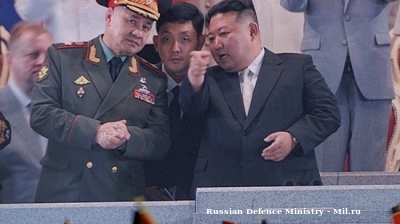
North Korea fires cruise missiles to mark Trump's arrival in the South
State media framed the launch as a reminder of North Korea’s military strength to what it described as its enemies. The launch does not breach United Nations restrictions, since the rules prohibit ballistic missile testing, not cruise missiles.
